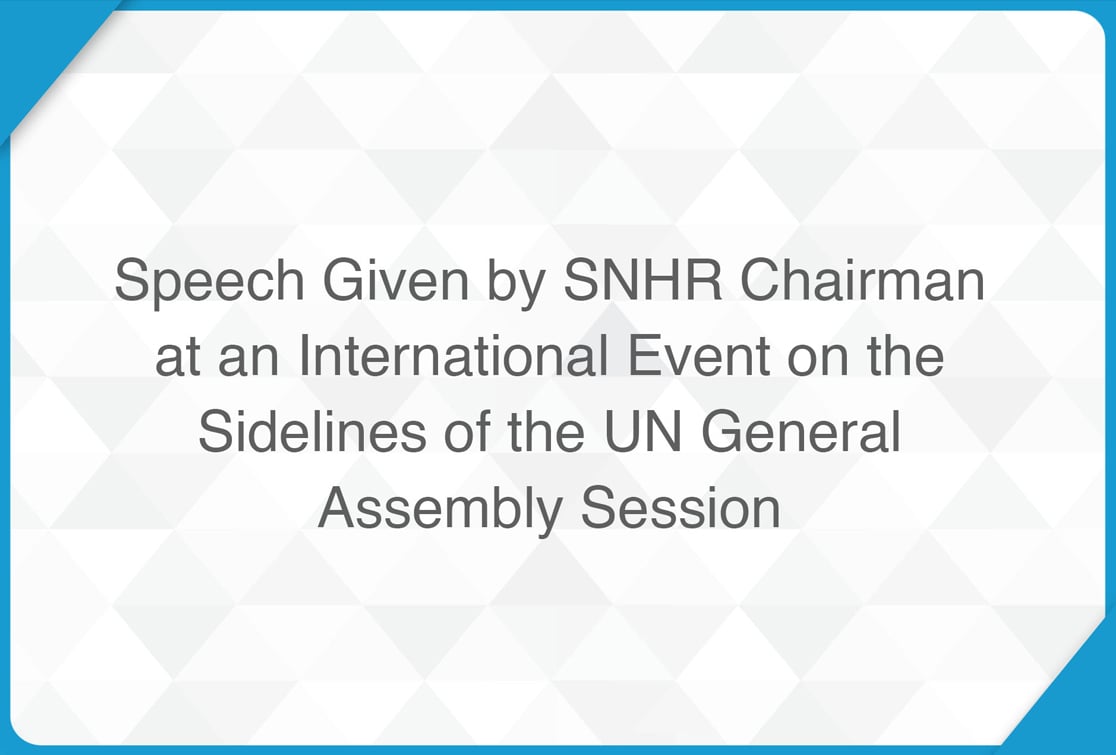
First of all, I would like to thank the states sponsoring this crucial and pivotal event for it tackles an issue that affects and terrorizes hundreds of thousands of Syrians. Deepest gratitude goes to the United States, the United Kingdom, and France, and I would like to specifically thank the DRL office of the US Department of State. What started as a simple exchange of ideas has eventually blossomed into this pivotal meeting.
In the limited time I have, I am going to tackle only two points and speak about a number of recommendations. I will also make some time for discussion.
1. The Syrian regime’s acknowledgment of the death of hundreds of forcibly disappeared persons, what does it entail?
2. Analyzing the most significant data that came into light
The Syrian regime’s acknowledgment of the death of hundreds of forcibly disappeared persons, what does it entail?
First: this meeting comes in the wake of a crucial development that didn’t receive its due attention on the international stage. The Syrian regime has, for the first time since the beginning of the popular uprising, acknowledged that dozens of forcibly-disappeared persons had died. SNHR has been able to record 836 cases so far. Seeing that the Syrian regime has long denied having any forcibly-disappeared Syrian citizens, why did it reveal the fate of those victims? And how could the Syrian regime know that they have died if it never had them in the first place?
Second: The way by which the Syrian regime revealed this information perfectly reflects the Syrian regime’s sadistic mindset towards the Syrian community, as security branches and prisons instructed civil registration offices to take care of this task. Our team found out that those cases started surfacing in May of this year when some families from Talkalakh city of western suburbs suburbs of Homs, went to those offices. Similar cases followed in al Heffa town, suburbs of Latakia governorate, and then Kafr Zita city, Hama suburbs. When some families went to civil registration offices to acquire regular documents, such as marriage, divorce, or inheritance, they were told by employees there that their son or relative have been registered as dead, sending many families into a state of complete shock and panic given that it is not, even remotely, the responsibility of the civil registration office to inform the residents that their beloved ones have been dead. On the contrary, when a family member dies, in the rest of the world, their relatives are the ones who register them as dead at civil registration offices.
Hundreds of thousands of Syrians fell into a state of fear in the wake of this news, and started flooding to civil registration offices hoping to know anything about the fate of their beloved ones after they used to go to security branches and detention centers at the early stages of the popular uprising.
Third: To get a sense of the gravity of the enforced-disappearance disaster in the Syrian community, it is important to note that 85% of all detainees turn into enforced-disappearance cases. According to SNHR database, which we have been constantly updating since 2011, the Syrian regime still has 81,652 Syrian citizens who are now considered forcibly-disappeared. The following chart shows how enforced-disappearance numbers have escalated over the past few years.


